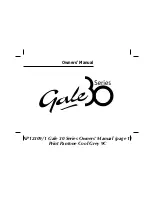
2.0 Smoothcut Plasma Cutters
7
BOC Smoothcut Plasma 40 Operating manual
2.1 Fundamentals of Plasma Cutting
A plasma can be created by adding energy to an electrically neutral
gas. In the case of air plasma cutting the air is dry, clean compressed
air delivered from an air compressor or an air line. By adding electricity
through an electrode (Hafnium), the gas becomes imbalanced and
conducts electricity. The greater the level of electricity the higher the
temperature of the plasma.
Plasma cutting torches control energy by constricting the arc and forcing
it through a constricting nozzle fitted to the torch. By increasing air
pressure and intensifying the arc with higher voltages, the arc becomes
hotter and more capable of blasting through thicker metals and blowing
away the cuttings, leaving minimal cleanup.
2.2 Process Operation
• Compressed air flows through the torch.
• A pilot arc is established inside the head of the plasma torch.
• The high voltage of the pilot arc changes the air stream into a
plasma stream.
• The plasma stream is constricted and forced through a tip with a
small orifice.
• The constricted plasma stream exiting from the tip is termed a
plasma jet.
• The plasma jet is allowed to touch the work.
• An arc is initiated between the hafnium electrode and the work.
• The arc passes through the orifice of the tip.
• The constricted arc so formed is a stiff, columnated and narrow arc.
• The intense heat of arc melts the plate.
• The plasma jet blows away the metal to produce a cut.
Cross Section of Plasma Torch
Typical Plasma Cutting Set-Up
Pressure regulating
control valve
(on back)
Air compressor
(sold seperately)
Work lead
and connector
Main power supply
Plasma Torch
Workpiece
Amperage
control knob
Torch connector
Air supply hose
Power On/Off
switch
(on back)
Airflow
Constricting nozzle
Electrode
Constricted Plasma Stream
Workpiece
24799 Smoothcut Plasma 40 OP Manual CC D7.indd 7
16/04/2014 1:00 pm






































